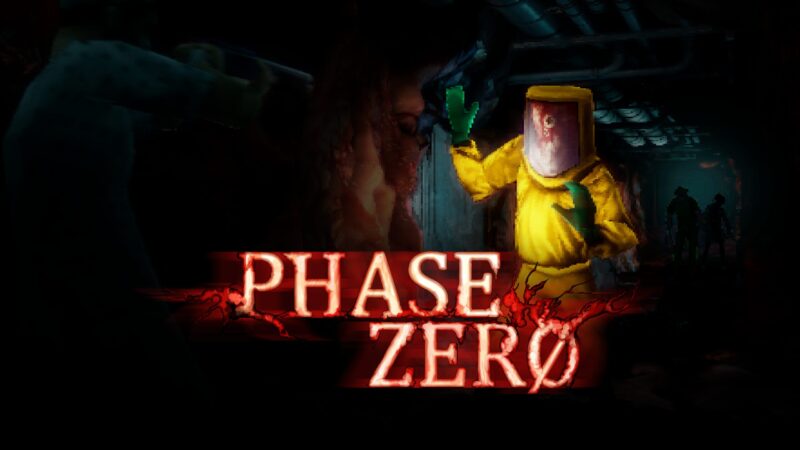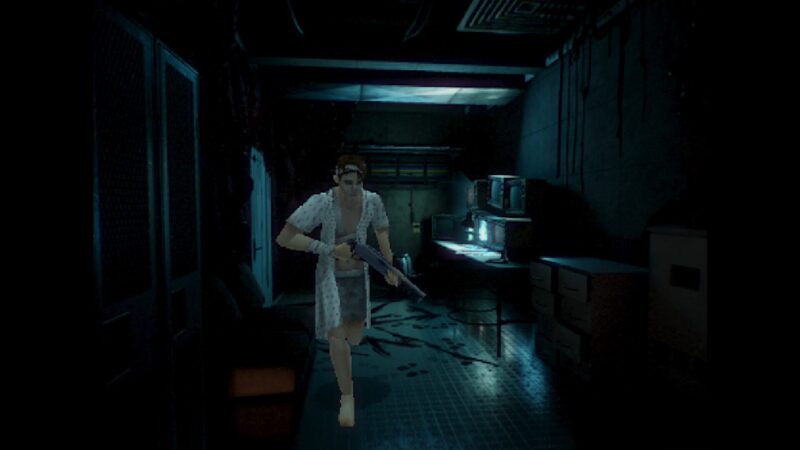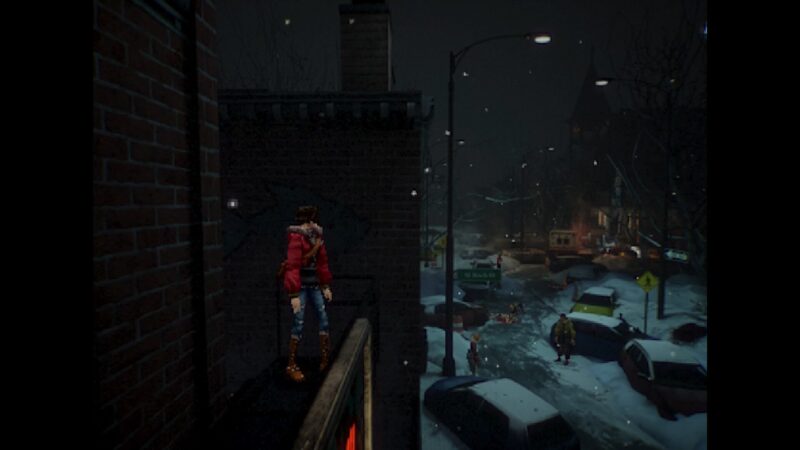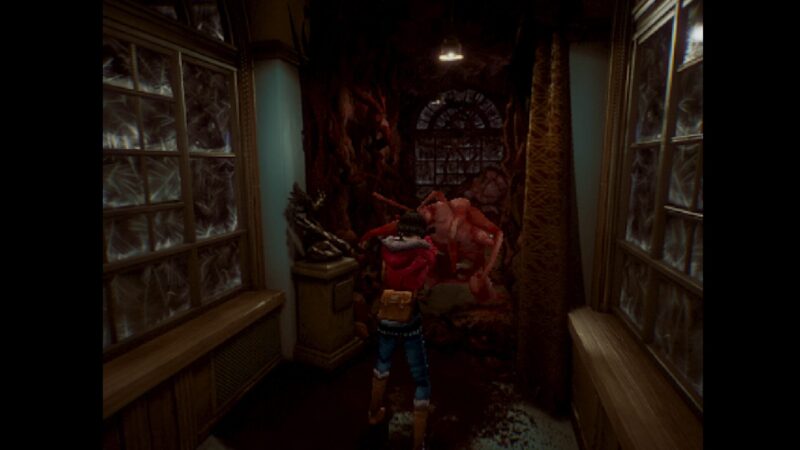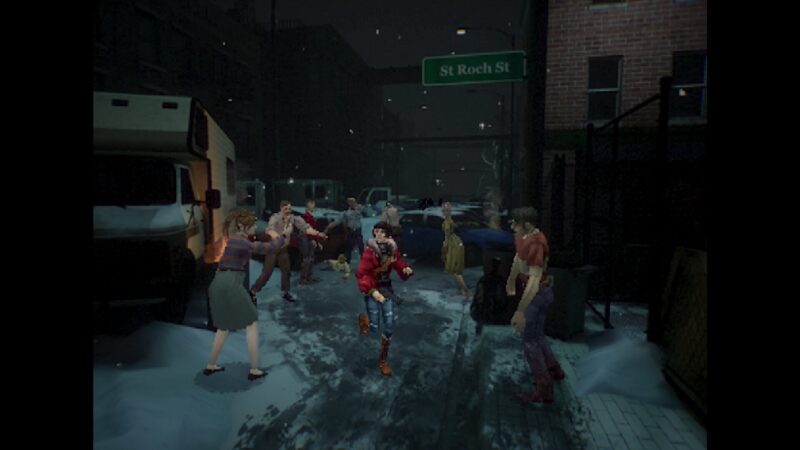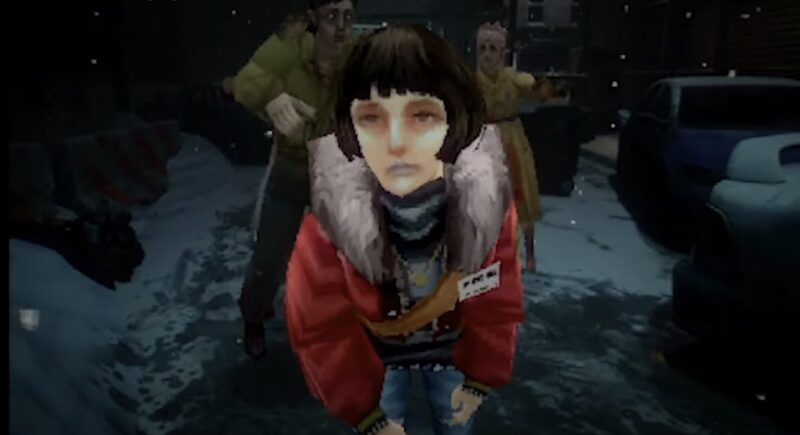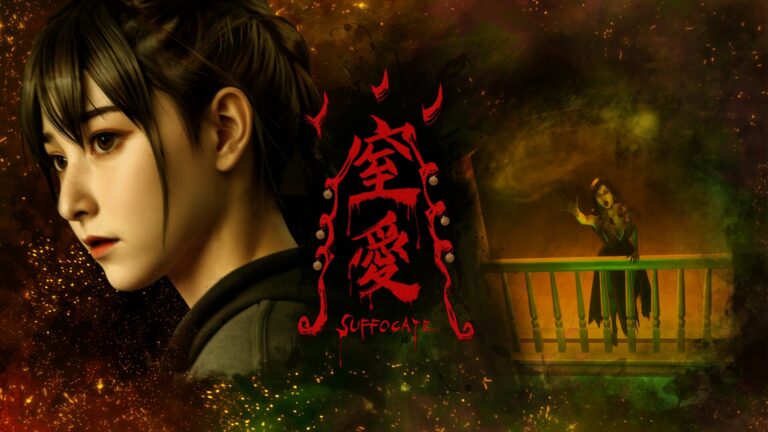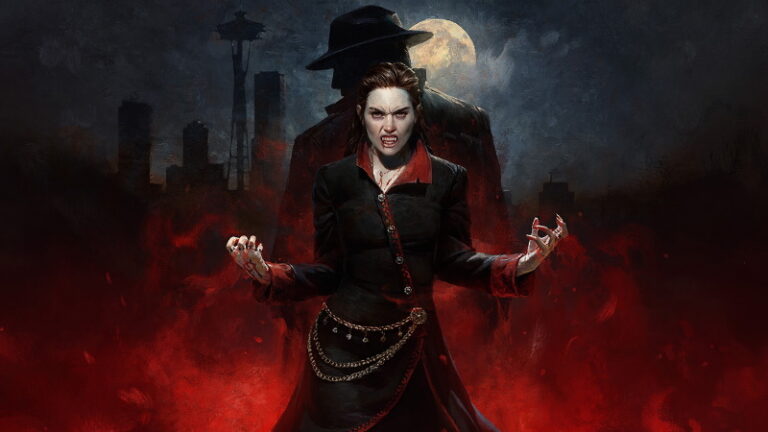PHASE ZERO has been turning heads as one of the most intriguing upcoming horror titles of the year. Blending psychological dread with grounded sci-fi realism, the game explores what happens when isolation, paranoia, and the unknown converge in a place far removed from human civilization.
To learn more about the creative vision and chilling atmosphere behind the project, we sat down with Krzysztof Tracz (Creative Direction & Project Lead), Katarzyna Amanda Hankiewicz (Art Director), and Iga Ewa Smoleńska (Narrative Designer) of SPINA Studio to discuss the team’s inspirations, design philosophy, and how PHASE ZERO aims to push players into the edge of fear and fascination.
For Krzysztof Tracz, Creative Direction & Project Lead
ROH: For PHASE ZERO’s tone, what was your original vision for the kind of fear you wanted to evoke in players?
PHASE ZERO is much more about the hostility of the environment than the fear of a specific monster. We’re not really trying to scare players in the traditional sense – it’s more about making them feel uneasy and uncomfortable, even after they stop playing. I believe the best kind of horror is the one that stays with you after you turn the game off, when it starts to blend into your thoughts and leak into everyday life. That’s why the world of PHASE ZERO is quite grounded. We want the locations and situations to feel familiar enough to be unsettling. If certain moments from our game linger in your mind and haunt you during ordinary activities, that means we did our job right.
ROH: What influenced the overall creative direction of PHASE ZERO? Were there any specific films, games, or real-world concepts that helped shape its atmosphere?
The main influence actually comes from a technical perspective. Since I was a kid, I’ve been fascinated by the clever trick of pre-rendered backgrounds – how they made games from that era look so realistic and cinematic. But when I grew up and started working in the industry, technology had moved on so much that this technique was considered obsolete. One day I decided to challenge myself and make a small project using pre-rendered backgrounds for a game jam dedicated to ’90s-style games, and the warm response from players to our game jam demo eventually led us to work on PHASE ZERO as a full project.
From the atmosphere side, PHASE ZERO is heavily influenced by the Resident Evil series, especially the idea from Resident Evil: Outbreak, where ordinary people are trying to survive extraordinary events. Looking beyond games, the project draws clear inspiration from films like The Thing and Annihilation, as well as TV series such as The Walking Dead. I also love stop-motion animation, like the one in TOOL’s Sober music video – that eerie aesthetic played a big role in shaping the game’s visual and emotional atmosphere as well. As you can see, PHASE ZERO is an amalgamation of many different media and art forms.
ROH: As Project Lead, how do you balance the team’s artistic ambitions with the technical and production realities of developing a horror game?
We placed a lot of additional restrictions on ourselves by choosing to build the game around pre-rendered backgrounds and a PlayStation 1 inspired retro aesthetics. That might sound limiting, but I see it as a healthy balance between ambition and practicality. Restrictions help us focus our creativity – they force us to find smart, elegant ways to make a static environment feel alive and interactive. Instead of fighting the technical limitations, we design with them, which keeps our artistic vision strong while ensuring the project stays achievable within our resources.
ROH: Horror relies heavily on pacing and tension — what strategies or design philosophies guided your approach to timing scares and emotional peaks?
The core idea behind this project is to create a cinematic experience – something that feels directed as much as it’s played. The fixed camera perspective helps a lot with that, letting us borrow techniques straight from film, like controlled framing and pacing. The classic structure of the game, with its tight, claustrophobic rooms, naturally creates a rhythm. We spend a lot of time making sure each space feels distinct and memorable, which helps us shape the game’s flow and emotional buildup. And when it comes to releasing tension, we like to mix it up – sometimes it’s a sharp scare, sometimes an intense moment of action, and sometimes it’s a bit of humor at just the right time.
ROH: Many horror games rely on jump scares or loud audio cues. How does PHASE ZERO differentiate itself in terms of how it builds and sustains dread?
It’s funny – at the very beginning, we decided not to rely on jump scares or loud audio stingers. But with a fixed camera perspective, every camera change already creates a kind of mini jump scare. There’s something about that style that naturally builds tension without us forcing it.
The fixed camera brings a lot of subtle horror tools with it. Your field of view is limited – not because the room is dark, but because the camera simply won’t let you see everything. That makes even a well-lit room feel uneasy. You start building a mental map of every space, which pulls you deeper into the world. The rooms are small and claustrophobic, partly to reduce the number of camera cuts, but it also makes you feel trapped. And the low-detail, retro visual style leaves just enough to the imagination, which is where most of the fear really grows.
So instead of fighting the limitations of the classic style, we leaned into them. And the interesting part is that people playing the demo were sometimes scared in moments we never designed to be scary – the tension just appeared on its own.
For Katarzyna Amanda Hankiewicz, Art Director
ROH: For the art style in PHASE ZERO, what visual language did you establish to communicate the game’s themes?
PHASE ZERO is a love letter to the golden era of survival horror, and that in itself already dictated a lot when it comes to visuals and style. What is so interesting is that many stylistic choices from this era came from the limitations of hardware at the time. So one of the first things I did was study those production processes and see the thinking behind the art direction choices. And I must say, back then, there were a lot of bright people coming up with really innovative and interesting solutions!
Coming back to PHASE ZERO itself, it was clear to us that we wanted to aim for a more grounded setting – a small, industrial town, everyday people, a place we all know how it looks, feels, and lives, even though we might never have visited it. We do our best to reflect this in our environments and character designs.
Emotionally, the theme of entrapment plays a big role. Our heroes try to find their way out of the town while it’s becoming more and more uncomfortable around them – fixed cameras, the 4:3 aspect ratio, claustrophobic corridors, a weird camera angle from time to time – push this theme further. It’s all about making you feel strangled, trapped, wanting to break out.
ROH: Can you walk us through your process of designing the environments — particularly how you use lighting, color, and texture to reinforce psychological tension?
From the onset of production, there was a certain line-up of places we wanted to show in our story. We also prepared a chronological timeline of all the locations and how they appear in the game one after the other. We then added references that captured the main vision for each place. This allowed us to see how the visuals would change from chapter to chapter and support the overall narrative. See how it all flows.
This method also works on a smaller scale, for each separate location. For example, for those who played the demo, every hospital floor had a small mood board. It helps to keep the place diverse, but it still has to feel believable as one building. The patient or treatment rooms in real-life hospitals look pretty similar, which might lead to (accidentally) confusing the player. That’s when you start playing with color, patterns, and different lighting scenarios. They will send subtle subconscious hints to players on where they are, if they’ve been here already, and in which direction they should head.
This isn’t probably anything new, but light can do a full 180-degree turn in how a space is perceived. Even soft lights in warmer tones may give an illusion of safety – while dramatic, cool lightning that casts sharp shadows can be quite anxiety-inducing. This knowledge is quite helpful when decorating saverooms. And a little interesting trick I use – adding a warm light makes meaty walls more visible and even gorier.
ROH: Were there specific artistic movements or visual references that inspired PHASE ZERO’s look — for instance, brutalist architecture, analog horror, or surrealism?
Aside from the obvious one – the PSX-era games, we looked for inspiration in movies and anything pop culture related from the 80s/90s/00s. Our reference board is filled with screenshots from Shining, Twin Peaks (as far as I know most of us are David Lynch fans), old tech, as well as fashion. While doing research for the hospital location, I rewatched the first season of ER, Scrubs and the Black Jack OVA.
Liminal spaces were a recurring theme since the very beginning. As I mentioned earlier, entrapment was an emotion we wanted to explore in this project, and we decided that liminal spaces play very well with it. Empty public spaces that usually should be bustling with people have this unnerving quality about them – and on top of this, you subconsciously keep asking yourself “Should I really be here?”
Body horror is a huge part of PHASE ZERO, for inspiration we looked at such masters of the unsettling as John Carpenter, David Cronenberg or Junji Ito – especially the movie The Thing. Looked at otherworlds from Silent Hill or Saya no Uta. I appreciate it when something is able to terrify me, and then I try to analyze it. Oftentimes, it’s not the gore itself that terrifies, but the darkness or familiar shapes in between – one lets your brain fill in the blanks, the other one makes the horror more relatable on a subconscious level.
In general, I think it’s important to immerse yourself in what you are doing and never limit yourself to just one medium or genre or even a period of time, when looking for inspiration. Krzysztof mentioned Tool’s Sober video, Iga dives deep into research, I love visiting museums and galleries – even ended up seeing an exhibition by Chiharu Shiota, whose work has been in our reference board since forever! When we spot RE references or a liminal space in the wild, we share them on our team Discord channel. You never know what can inspire you, so keep your eyes open.
ROH: How closely did you collaborate with the sound and narrative teams to ensure visual and emotional consistency across the game?
We at SPINA are a rather tight-knit team. We work with each other well and this also makes communication between us much easier. When it comes to sound, it usually comes after we have the visual tone set. It is the final touch, the cherry on top that completes the atmosphere. It’s a hugely important piece of the puzzle, as sound can really amplify the emotional impact of the scene.
As an Art Director working with the people behind narration and level design, we collaborate hand in hand. We feed off each other. It took us some time to develop this flow. We had to learn to carefully plan each step, create a story for the block out, block out what is optimal for decorating, and decorate so it sets the right mood for the sound. Fixed Cameras play a huge role in this – it’s important to find the right angles in the block out stage, of course, we stay flexible and sometimes let happy accidents happen, but having the cameras set makes things much easier for the art department!
ROH: What was the most challenging visual element to get right — a location, a creature, or perhaps the way the game’s world reacts to the player?
Despite being one of the most fun and rewarding tasks, designing our main heroes proved to be quite a challenge. How to portray personality and an interesting design, while maintaining believable low-poly models? You start simple, and the character doesn’t stand out. You add more, and it looks out of place for this type of game – balancing the level of detail in this style is key.
Then there is gameplay and readability – you need to make sure the heroes are visible in every scene, even if they are away from the camera, it’s quite dark, or the place is cramped with many enemies. We analyzed so many old and newer low-poly character models as a guide. Some things we iterated over and over on, like the contrast on textures (it helps achieve more of a 3d effect!), or at some point we decided to add a small detail to the main hero’s shoes (this increased the full figure’s visibility). At times, it’s a lot of trial and error. Hopefully, we created characters that players can identify with and like the look of.
For Iga Ewa Smoleńska, Narrative Designer
ROH: The title PHASE ZERO suggests both a beginning and an experiment — can you share how that concept ties into the story’s central mystery or theme?
The ‘beginning’ is a good trope, as the game takes place during the first hours of a mysterious disease that twists the bodies and minds of the townsfolk of Flint Peak. The player knows as little as the protagonists themselves – trapped in this dangerous new reality, and together with them, they need to uncover what happened in this small, isolated town. As they play and progress in the story, they will unravel information about what went down, as well as observe what is happening to the monsters roaming the snow-covered streets of Flint Peak. This also ties into the chosen title, but I won’t go into detail here to not spoil anything for those wanting to play.
ROH: Psychological and survival horror thrives on ambiguity and interpretation. How did you balance clarity of narrative with the player’s sense of confusion or unease?
We try to make each story beat clear and easy to understand for the players, but when it comes to the interpretation of what they actually mean (especially for the heroes of PHASE ZERO), we planned our character arcs to give you more context as you progress further in the game. This gives us time to make the players question some of the decisions made by our protagonists and wonder about the state of the world. Rest assured that we plan to answer each question we throw at the players, as PHASE ZERO wasn’t meant to be a confusing open-ended narrative from the beginning.
ROH: How do you approach writing for survival horror without relying on traditional tropes — such as amnesia, haunted houses, or demonic possession?
Early on in development, we made a list of what we wanted the story to have and what we wanted to avoid. The tropes you mentioned were very high on our ‘don’ts’ list. As such, we focus on ideas more grounded in reality, avoiding ‘magical’ turns of events, turning more towards fantastic science than the occult. Let’s say our roots lay more on the side of classic Resident Evil and less on the Silent Hill.
It’s great to work with a clear vision and themes, as when agreed upon early on, they can actually guide you through the scenes and the scripts. A lot of questions are immediately answered when you know you cannot reach into the magical depths of human imagination and need to focus on things that are actually available in the real world. Mundane things tend to be reasonable and clear for the players, which also helps design.
ROH: What emotional response do you hope players take away when the credits roll — fear, introspection, catharsis, or something else entirely?
First of all we are very set on the player understanding the story as a whole and our characters’ roles in it. We want the person on the other end of the gamepad to take a moment to think about what just happened, why, and what that means for the world of PHASE ZERO. Consequently, they will, hopefully, have an introspection about what they would do in a situation like that, and come up with a couple of ‘what if’ scenarios. The emotions those scenarios can leave the player with can be very different and depend on what type of person is playing the game – I can only hope that the game will make the players think about it even after the credits stop rolling.
And that’s all for the interview, folks! As PHASE ZERO nears its next major development milestone, it’s clear the team at SPINA Studio is crafting more than just another survival horror game. Through meticulous art direction, human-centered storytelling, and a focus on psychological immersion, PHASE ZERO hopes to be a haunting descent into retro horror. You can play the free demo on Steam, and look forward to the game’s release like the rest of us!

